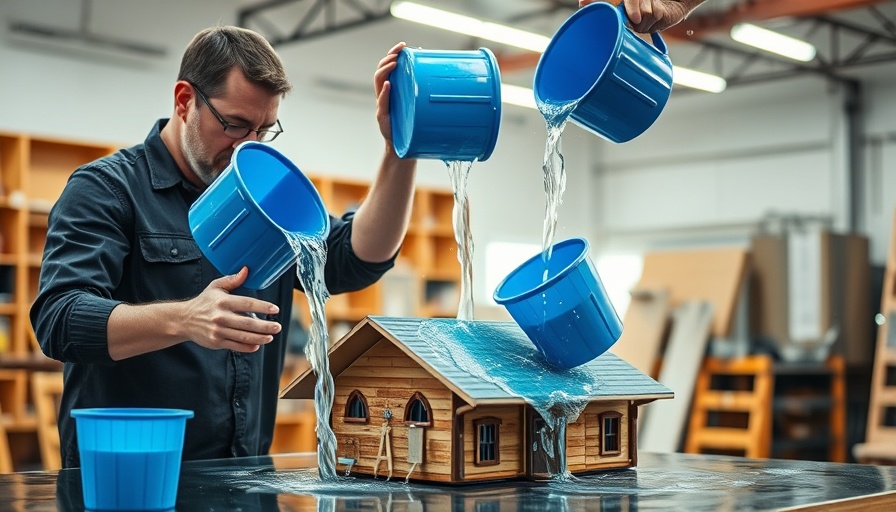
Understanding the Impact of Flood Damage on Your Home
Severe weather can strike at any time, leaving homeowners vulnerable to devastating flooding. When water invades your home, it’s essential to understand what materials are at risk and how to respond effectively. In this article, we’ll discuss the key steps to take when dealing with flood damage, so you can protect your home and restore it efficiently.
In 'What to Do When Severe Weather Floods Your Home | Storm Ready', the discussion dives into crucial flood recovery steps, exploring key insights that sparked deeper analysis on our end.
Your First Steps in Flood Recovery: Safety First!
When water enters your home, your first priority must be safety. Inspect for any potential contaminants like sewage or chemical runoff. If there’s a chance of contamination, or if the cleanup feels overwhelming, don't hesitate to call a professional. Equip yourself with knee-high rubber boots, an N95 mask or respirator, and eye protection to ensure that you are safe while working in hazardous conditions.
Removing Water: Tools and Techniques
Water can cause unnecessary damage if left standing, so swift action is crucial. Start by using a sump pump or a wet/dry vacuum to remove as much water as possible. For smaller amounts, a wet/dry vacuum may suffice, while a submersible pump can handle larger volumes. After removing the bulk of the water, you’ll face the next challenge: drying out the building materials.
Assessing Damage to Building Materials
The type of flooring and wall materials significantly influence recovery efforts. For example, carpets often trap moisture underneath, contributing to mold growth. If your carpets are soaked, you’ll need to pull them up quickly to start drying the area beneath. Additionally, hardwood floors can warp if left in water, resulting in what's known as cupping, which may require sanding or replacement.
The Role of Airflow in the Drying Process
After extracting water, it’s crucial to increase airflow within the affected spaces to promote drying. Use box fans or dehumidifiers to facilitate the process. The goal is to reach the original moisture levels of dry and unaffected areas of your home. To check your progress, a moisture meter can help you identify whether there are still wet areas that need attention.
Preventing Mold Growth After Flooding
Mold can start growing within 24 to 48 hours of water intrusion, making it critical to act quickly. Wet materials can be a breeding ground for mold, so ensure that you remove any saturated insulation and materials. Implementing preventative measures such as applying specialized mold treatments can also safeguard your home.
Long-Term Strategies for Future Flooding
After restoring your home, consider long-term strategies to mitigate future flooding risks. Regularly check your sump pump for functionality, and consider a battery backup system to ensure it operates during power outages, especially if severe storms are forecasted. Alongside these preventive measures, creating a detailed emergency preparedness plan can be invaluable.
Community and Resources for Homeowners
In the aftermath of flooding, it can be comforting to know you’re not alone. There are many resources available, including local remodeling contractors who specialize in water damage restoration. The knowledge they bring can save you time and ensure your home is rebuilt to resist potential threats in the future. When searching for help, consider using terms like 'remodeling contractors near me' or 'basement remodeling ideas' to find professionals suited to your specific situation.
Conclusion: Navigating the Waters of Home Flooding
Addressing flood damage requires care and prompt action to protect your home from further hazards. Whether dealing with untreated water, assessing affected areas, or enacting preventative measures, being well-informed makes all the difference. Remember, investing time now into proper restoration can save you from costly repairs later. If you find yourself in a water situation, refer to our guide to stay safe and restore your home efficiently.
 Add Row
Add Row  Add
Add 




Write A Comment